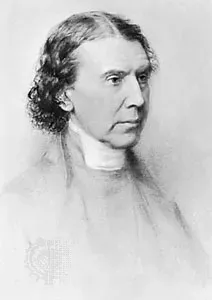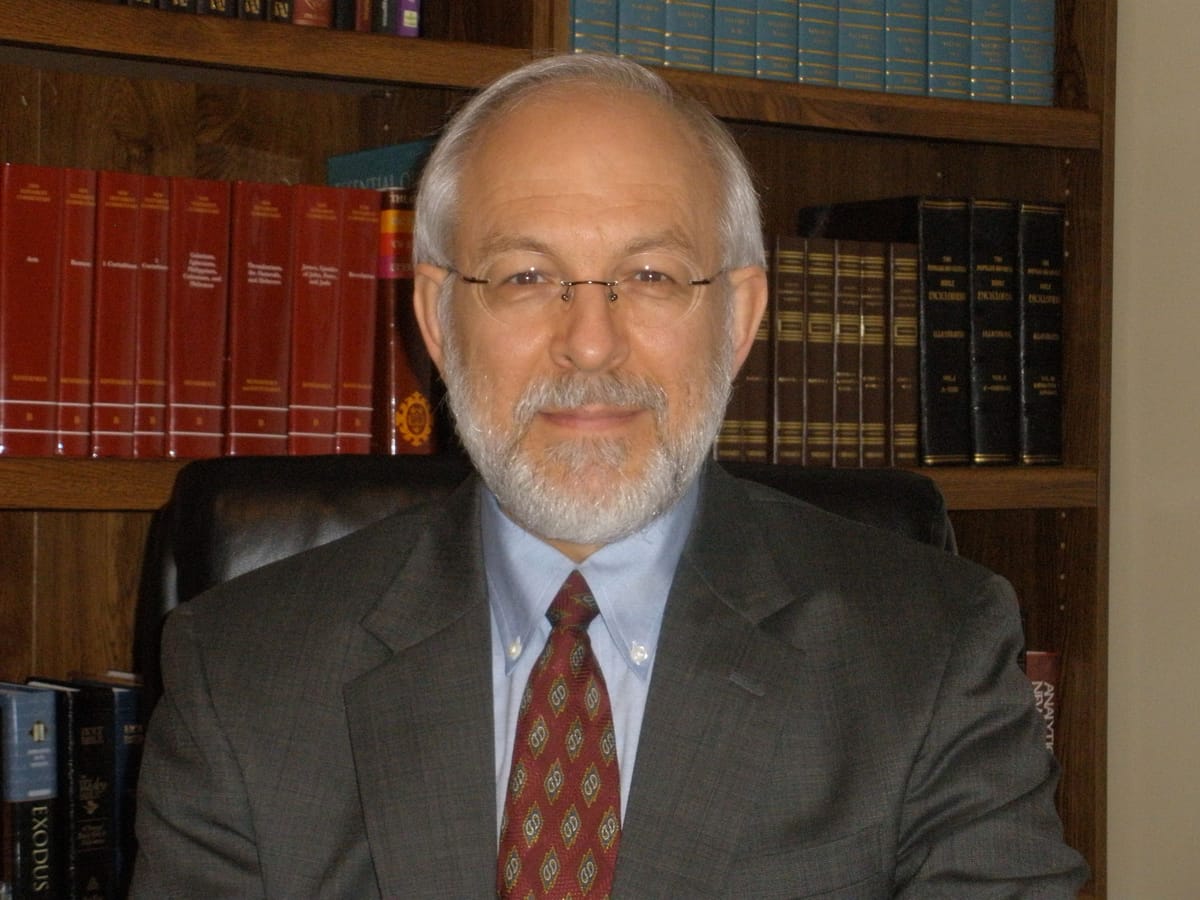Very early in our work as Stone Kingdom Ministries, I made a very in-depth study of the holy or sacred name of God. It was a series of five, one-hour lectures. After the cassette tapes went out to our Tape Ministry, I had some critical feedback on a certain point—a stand which I took in the series.
It is not necessary to disclose that particular point, but my stand on that particular point pervaded my series. Thus, when I was convinced they were right and I was wrong, it caused me to request that recipients of the tapes either destroy them, erase them, or send them back to us for reuse.
The point of contention was not about the subject of the following article which we are sharing for your edification. Archbishop Tait herein uses the name “Jehovah.”
My studies persuaded me that the sacred name is not Jehovah, but Yahweh. About that point, I am still as certain as one can be prior to the return of Jesus who will set us all straight on any of our erroneous beliefs.
It is no doubt obvious from those who follow our oral and written teachings that we often explain that many English translators substitute the word “LORD” in all capital letters and have removed the holy name.
They excuse this practice by saying they are following a Jewish rabbinic tradition which holds that the holy name is too holy/sacred for us mortals to even utter. We thoroughly disagree and reinsert it almost always in our teachings.
We shall leave Tait’s work as is, but I just wanted our readers to know our stand on the matter before we present his writing. Obviously, we think highly enough of the work overall that we shall not let that be an impediment to your and my edification.

QUOTE: Archibald Campbell Tait (born Dec. 21, 1811, Edinburgh, Scotland—died Dec. 3, 1882, Addington, Surrey, England) was the archbishop of Canterbury, remembered primarily for his efforts to moderate tension in the Church of England at the height of the Oxford Movement. END QUOTE Source.
The italic font is Tait’s, but any boldface or underlining emphases and comments or additions in [brackets] are ours.
Jehovah and Christ
By Archibald C. Tait
THE INFINITE MAJESTY OF THE GODHEAD
At last, through Moses, God disclosed His name to man. He had already revealed Himself to the patriarchs, whom He had led throughout their earthly lives in the way He wished them to go. He had done signs and wonders before them many times, so they would not be in any doubt as to His Presence, intentions and companionship, along the way.
He had sent His angels to help, encourage, and at times to save them: He had spoken to them in dreams and in words audible to their earthly ears. He had foretold the future, and had called Abraham His friend. But never before had He given men a name to know Him by.
No wonder, then, that when Moses approached the burning bush the Angel of the Lord told him, “Draw not nigh hither: put off thy shoes from thy feet, for the place whereon thou standest is holy ground.” Nor is it to be wondered at that “Moses hid his face; for he was afraid to look upon God. “ His name was — and is—I AM THAT I AM.
Then it was that God announced His name and gave Moses instructions to prepare to lead the Israelites out of Egypt. When his first approach to Pharaoh only resulted in further burdens on his brethren, Moses returned, complaining to his God.
At that point God announced His second name, Jehovah, whereby He has been known throughout the ages, until Christ came in the flesh. It was a name that struck terror to Israel’s enemies, and gladness to the hearts of all who served Him.
THE INEFFABLE NAME
The name, “I AM THAT I AM”, denotes the timelessness of the Godhead, His self-sufficient being, His eternal everlastingness. It also denoted His personality, as opposed to His impersonal power. In its shortened form, “I AM”, it gives us the clue that welds the New Testament irrevocably to the Old.
There has been so much controversy because of what, at first sight, may appear to be irreconcilable differences in character, action and teachings between the Old Testament Jehovah and Jesus Christ, that many have come to look upon Jehovah as merely a rather cruel Hebrew tribal deity, who had better be forgotten in these more enlightened Christian days.
They think of this Jehovah as a savage murderous being invented by the Hebrews for their own bloody ends. Nothing could be further from the truth, for Jesus Himself, during His earthly life, claimed to be Jehovah come in the flesh. When people asked Him who He was. He said, “Before Abraham was, I AM”.
The Jews of His day knew exactly what this meant, and it so shocked and enraged them by its terrible blasphemy, which indeed it would have been had it been a lying claim, that they sought to stone Him to death, the mode of execution laid down in the Mosaic Law for such a crime.
He was claiming to be their God, as indeed He was, and they would have none of Him. This failure to recognise their Messiah was the fundamental sin of the Jews: the sin that brought them to their final national destruction at the hands of Titus in A.D. 70.
Many of our present-day clergy and theological students still fail to realise this fact, that Jehovah and Christ are one. But it is the central fact of the Gospel of God. If it were not true, the basis of Christianity would fail.
JESUS IS GOD
The writers of the New Testament, especially St. John, did not miss this essential fact. St. John states it explicitly when he says, “In the beginning was the Word (the Logos), and the Word was with God, and the Word was God.... And the Word was made flesh and dwelt among us, (and we beheld his glory, the glory as of the only begotten of the Father,) full of truth and grace.” Many times this has been read from the pulpits of the churches, but how seldom it has been understood either by readers or hearers?
Some clergy ‘explain’ this fundamental first principle of the Christian Faith by saying that John was writing his Gospel to the Greeks in Asia Minor, Egypt and Greece, in terms of their own native philosophy.
This was a philosophy mainly derived from their famous philosopher Philo of Alexandria, who was a Jew with a strong strain of Grecian training in his interpretation of religion. He had lived a few generations B.C., yet his writings still carried weight in Grecian circles.
He had taught a great deal of misty philosophy regarding what he called ‘the Logos’ and had created a great impression on the intellectuals of his day. According to ‘modern’ theologians, this had not faded by the time St. John wrote his Gospel, so he tried to reap for the benefit of Jesus Christ what Philo had sown earlier for his own intellectual glory.
Thus, they have argued, by correlating Philo’s rather misty ‘Logos’ with Jesus Christ the Word of God, St. John was ‘taking a justifiable short cut to the Christianisation of the Greek-trained philosophers and thinkers’.
THIS WILL NOT DO!
This specious way of interpreting the Scriptures will not do. There was no need for St. John, to pick up and adopt as Gospel, even the noblest of the teaching of the pagan world unless, by reason of the occasional flashes of spiritual light sent from God, at times even to the heathen, these teachings were true. St. John had a Gospel that did not need bolstering by any invented ‘Logos’ of Philo or anyone else.
What then is the truth of the matter? St. John taught — and Jesus Christ explicitly claimed — that Jesus was and is, in very fact, the Logos, the Word of God made flesh.
This means that Jesus, in times past known to the chosen people of God, and to all their God-fearing ancestors as I AM, or Jehovah, or the Lord or the Lord of Hosts, or by many another name of power and majesty, was the actual administrative and operational executive of God the Father, carrying out the Father’s Will in the heavens and on earth.
He it was Who walked in visible form with Adam in the Garden of Eden, Who spoke with Noah, Abraham, Isaac, Israel/Jacob and with Moses. He it was Who created the heavens and the earth, and all that is in them, working out in material form the mighty plans of the Father of Light, and translating them, into the tangible, visible, and audible things of our daily life.
As St. John says, “All things were made by him; and without him was not anything made that was made.”
The Executive Power of God is what Jesus rightly claimed to be. St. John knew Him for what He is, and said so in no uncertain manner. How then can the Old Testament Jehovah and the New Testament Jesus Christ be at variance?
God cannot deny His Word. God cannot talk one way and act another. He cannot change His inmost being to suit the times, nor will He teach one thing to one age and something contradictory to another.
IN THE BEGINNING
We visualise God as being lonely in His universe, in the material immensity of which there are none to love and understand. Then the crowning achievement is conceived. The loving mind works out the intricate detail. The Son carries thought into effect.
After aeons, ‘days’, of preparation the earth is ready and man is created. In the fact of having a mind to think and a heart to love is man “made in the image of God”.
Without the knowledge of good and evil, right and wrong, and with no will or power to choose between them, man would be little better than a clever pet who could never understand the smallest fraction of the Father’s love and power.
God knew what such a gift to man would entail, in suffering, disaster and death, not only of man himself but of God’s Christ. Yet He thought it worth while to achieve the miracle of a righteous man, for only a man who knew what good and evil were, and chose good because he loved it, who understood the power of evil yet did not succumb before it, could be righteous and fit to be God’s eternal companion and friend.
To achieve this amazing purpose, the development of righteous man, God the Father must consult God the Son, for it is only by the Son with His material nature that the debt for sin could be paid. Sin was inevitable to the natural man, and God knew it.
In this fully foreseen and accepted self-immolation lies the fullest love of the Father and the greatest glory of the Son. Only because this eternal Propitiator was there “before the foundation of the world” was the Father able to put in train the achievement of the perfect, righteous man, the man perfect in body, mind and spirit, knowing both evil and good, and always choosing the good because it is good.
So when we see the sin and suffering with which our earthly lives are at present constantly surrounded, let us remember Christ our Saviour, and realise that this present world is only the beginning of our creation.
Let us say with St. Paul, “For I reckon that the sufferings of this present time are not worthy to be compared with the glory which shall be revealed in us.”
ALL THINGS WERE MADE BY HIM
In contemplating Almighty God and the eternities of time and space, which He controls and expands, we may visualise the universe as an expanding bubble. This is in line with the observed facts of astronomy, and has been expounded in part by Sir James Jean in his book The Expanding Universe.
In this book, he shows that the universe is, as far as our greatest telescopes have been able to show, formed in the shape of a great cartwheel, which is constantly expanding outwards at speeds steadily approaching that of light itself.
By going a step further we can see it to be reasonable to think that what we see is but a small area of the bubble surface, for even if we were not limited by the range of vision of our telescopes, the time light takes to travel over the vast distances involved would make it impossible to penetrate round the whole circumference of this expanding universe.
The uses of radio telescopes suffer from the same limitation, and therefore get us hardly any further out into space than do the optical. This apparent cartwheel shape should therefore not surprise us, for we know mathematically that if we take a small enough part of any curved object it will appear to be flat throughout that small portion.
That is why light seems to us on the earth to travel in straight lines but when we launch out into astronomical measurements, we find that light really curves over these vaster distances. This effect was first foretold by Professor Einstein in his Relativity Theory and later confirmed to be a fact by experiment. END QUOTE
The foregoing is an extract from Archbishop Tait’s book He Talked by the Way. We found this article in the October 2000 issue of the Kingdom Digest, a now-defunct publication.
~END~




